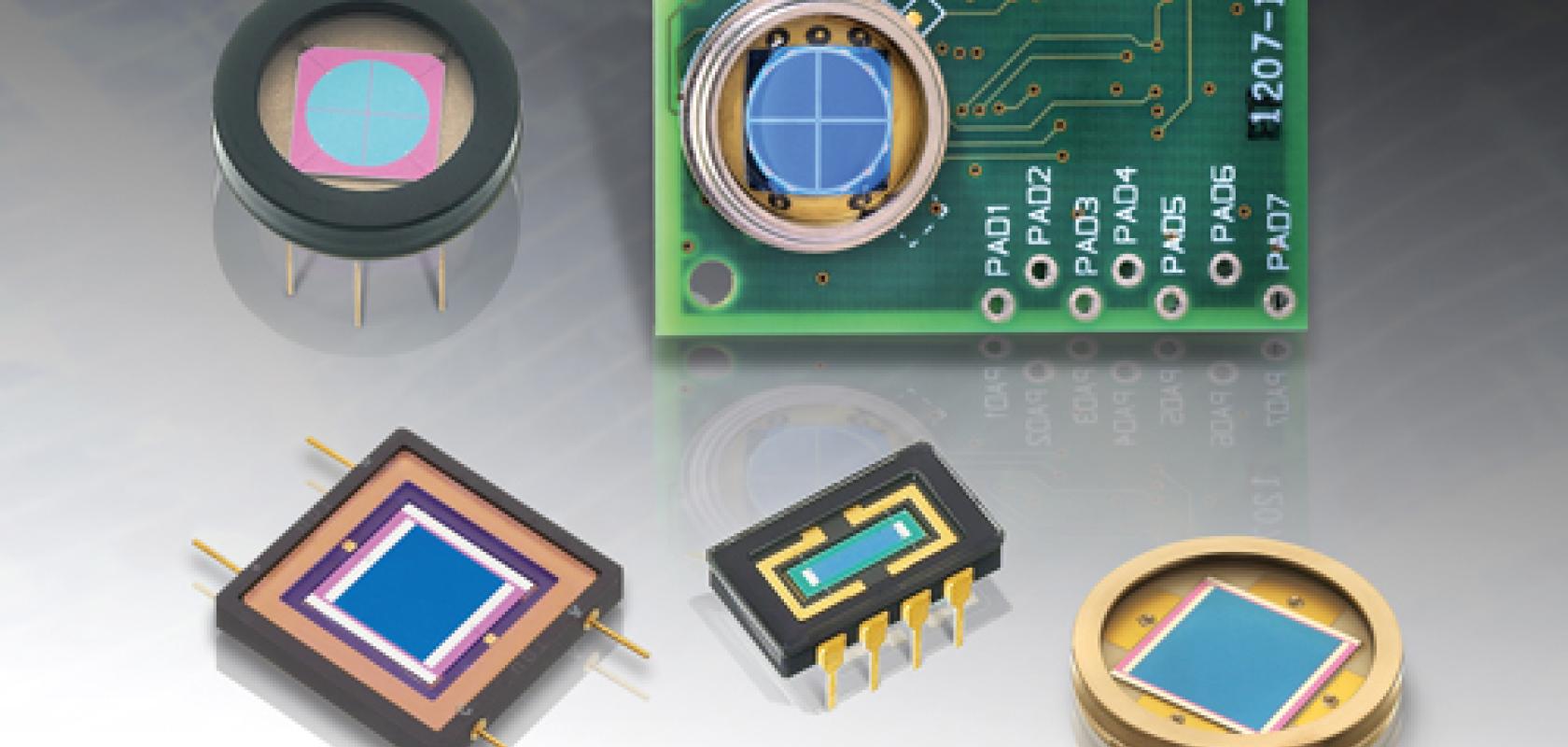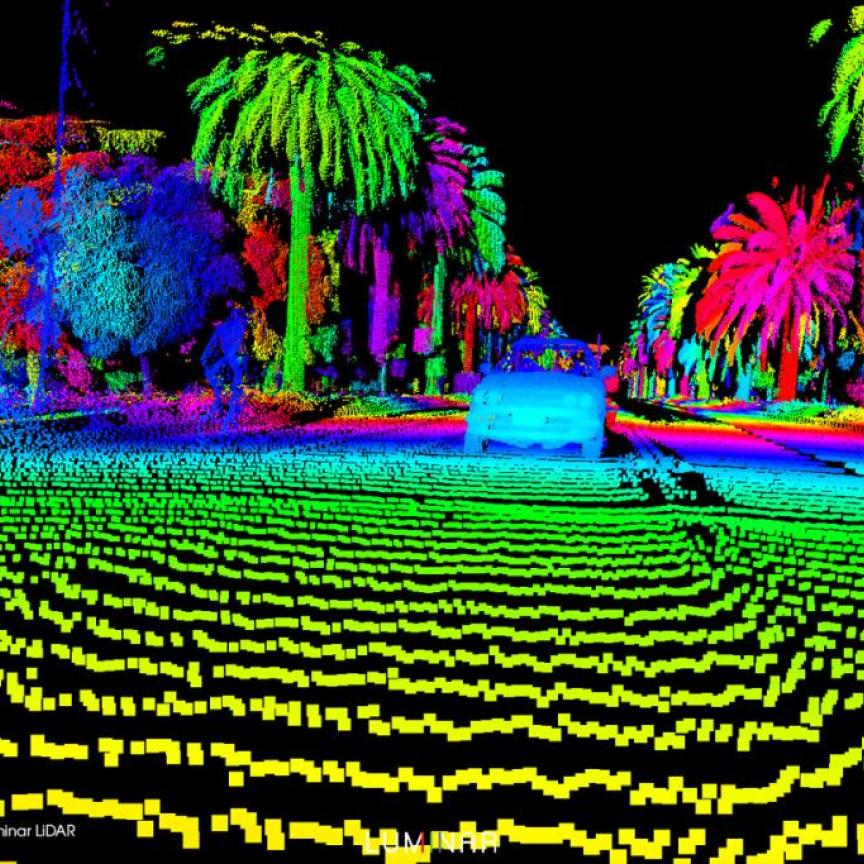Gemma Church explains how position sensing devices are entering new fields
Position sensing devices (PSDs) are an established technology but, thanks to recent advances, they are now breaking into a broader range of applications, including telecommunications, military and remote sensing.
PSDs are single substrate photodiodes, which are used to find or locate a beam within a defined sensing area. Compared to discrete element detectors, like CCDs, PSDs provide continuous position data with a high-speed response and high position resolution.
PSDs can find the position of a beam within fractions of microns. As a result, PSDs are used in applications including beam position control, vibration analysis of mirrors, machine tool alignment, human eye movement monitoring and more.
There are two broad categories of PSD: segmented PSDs and lateral-effect PSD
Dr Oleks Goushcha, lead scientist at OSI Optoelectronics, explained: ‘Position sensitive detectors find increasingly wide application in different fields of technology. Due to a relatively simple design and readout circuit, they can be miniaturised and used as very energy-effective devices in applications where high accuracy of positioning is required.’
There are two broad categories of PSD: segmented PSDs and lateral-effect PSDs. Segmented PSDs are common substrate photodiodes, which are divided into two or four segments, separated by a gap or ‘dead region’ with decreased sensitivity, dependent on the incident wavelength.
Lateral-effect PSDs are continuous, single element planar-diffused photodiode devices, with no gaps or ‘dead’ areas.
Compared with lateral-effect PSDs, segmented PSDs provide higher position resolutions (0.1µm versus 0.5µm) and a higher accuracy due to their superior responsivity match between elements. Very low light detection is also possible with segmented PSDs because the signal-to-noise ratio does not affect the resolution.
Segmented PSDs also exhibit excellent stability over time and provide the required level of temperature stability and fast response times necessary for pulsed applications. This makes segmented PSDs excellent candidates for nulling or beam centering applications.
The main advantage of lateral-effect PSDs is their wide dynamic range. They can measure the light spot position to the edge of the sensor. They are also independent of the light spot profile and intensity distribution, which affects the position reading in the segmented diodes. The resolution is also detector/circuit signal-to-noise ratio dependent for lateral-effect PSDs. As a result, the lateral-effect PSDs provide advantages in applications where tracking a small beam diameter is required in, for example, certain telecommunication-related applications.
OSI Optoelectronics manufactures both segmented and lateral-effect PSDs, including two types of lateral-effect PSDs: duo-lateral structures (featuring two resistive layers) and tetra-lateral (with a single resistive layer).
A recent whitepaper from OSI Optoelectronics provides details on the characteristics of different PSDs, including the advantages and disadvantages for each type of device.
The positioning accuracy and the size of the active area, which must also respond with high accuracy, require consideration depending on the application area
OSI Optoelectronics’ diverse range of PSDs are now used in an increasing number of applications in areas related primarily to the telecommunications industry, according to Goushcha. The company’s devices have delivered many unbeatable cross-industry solutions, providing global satellite coverage with internet connectivity, for example, as well as other alignment use cases.
PSD choices
So, which PSD is best for which application area? There are a few factors to take into account. The positioning accuracy and the size of the active area, which must also respond with high accuracy, require consideration depending on the application area.
Goushcha explained: ‘For example, certain types of PSD structures (lateral effect) may provide an extremely high x-y resolution but in a very small active/displacement area. The other designs may have lower x-y resolution but will work better within a much larger displacement area.’
Depending on the use case, the signal-to-noise ratio is another important consideration. This can be tuned depending on application. ‘However, higher frequency bandwidth may not be achieved when high signal-to-noise ratio is required,’ Goushcha added.
The wavelength is a potentially limiting factor for PSDs, which must be less than 1,100nm for Si-based PSDs and greater than 800nm for InGaAs PSDs.
OSI is addressing this challenge. For applications where multiple wavelengths are required (covering a wavelength range from around 600nm to 1,500nm), PSDs based on wavelength extended InGaAs are available from Advanced Photonix (a division of OSI), which are sensitive within a wide range of wavelengths from around 500nm through to 1,600nm.
Goushcha explained: ‘OSI (and Advanced Photonix as its division) is planning to expand offerings of PSD detectors (both lateral effect and segmented) in the areas related to the telecommunications industry. We plan to increase offerings of various types of PSDs in the near-IR and mid-IR spectral range.
‘In addition, we are developing full-optical rotary sensors based on lateral effect PSDs that will be useful for a variety of applications,’ Goushcha added.
OSI Optoelectronics is continuing to push forward with its PSD development plans. Goushcha said: ‘PSDs may provide energy saving operations in industries that [have never considered] using PSDs. In addition, many emerging applications of PSDs will provide better reliability over existing solutions (for example with rotary sensors).
‘Changes in the PSD market may be dramatic in the next few years, so it is necessary to keep our development efforts on track.’
Further information
Read more on this subject: here


